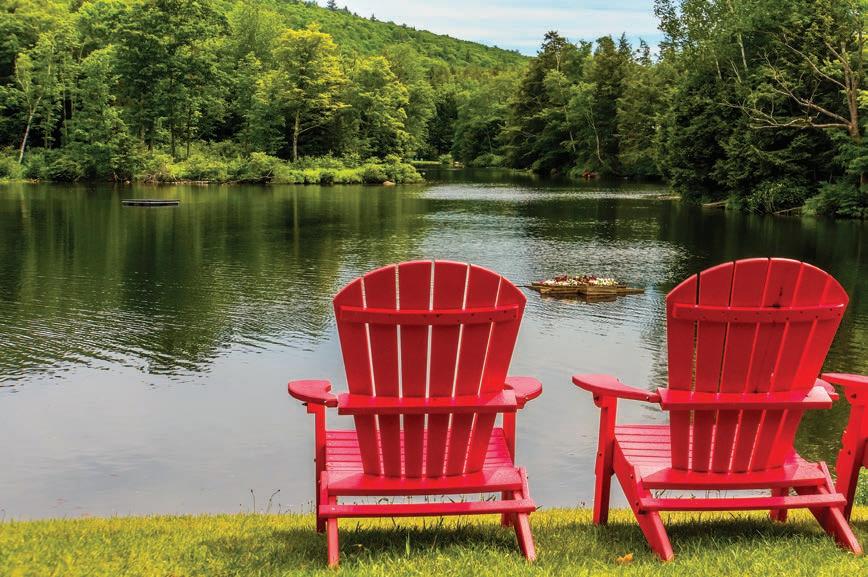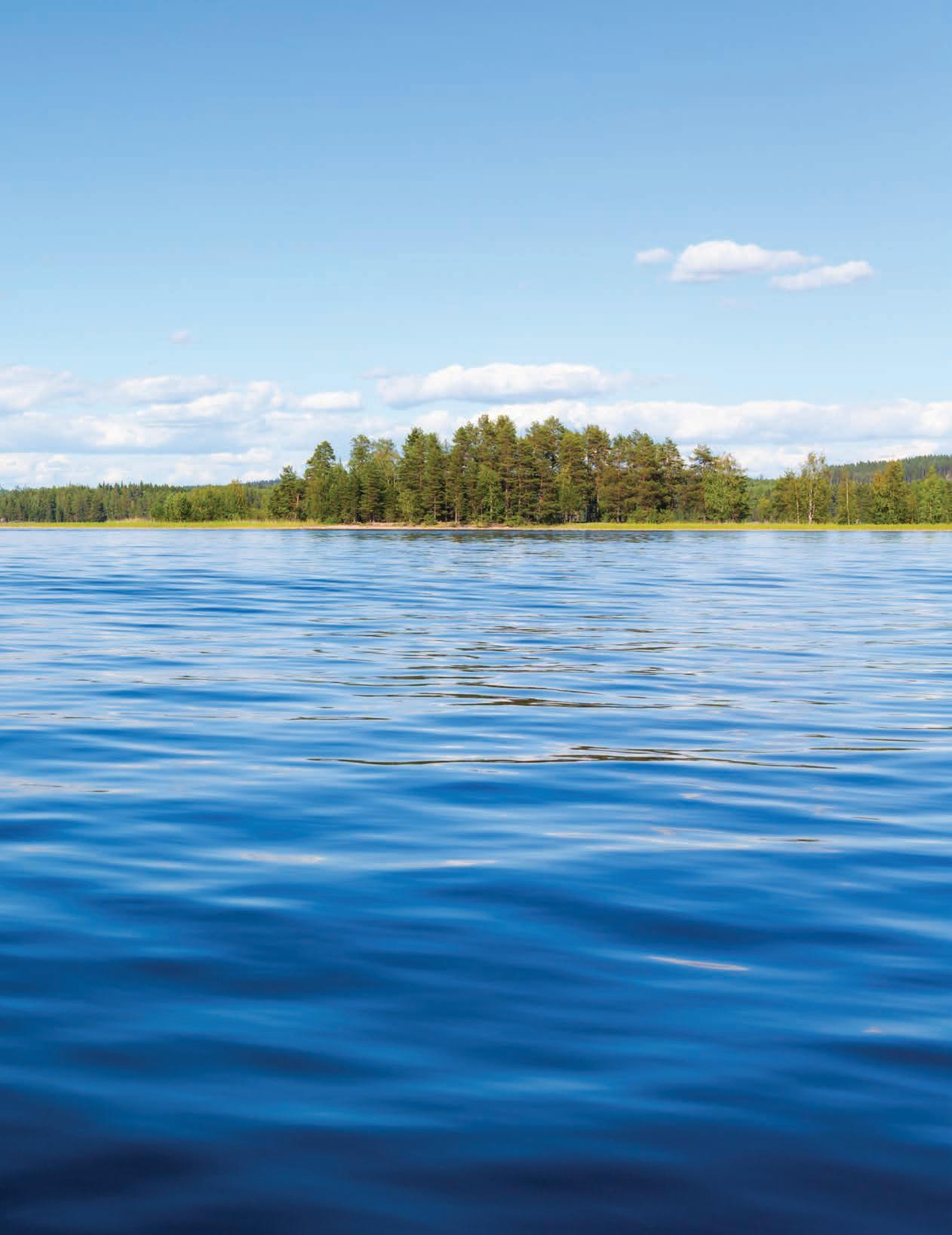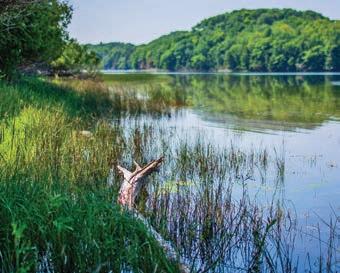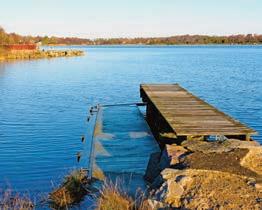
2 minute read
Get In The Lake Zone(s): Shoreline Health
Get In The Lake Zone(s)
For a healthier lake, your shoreline should have these three zones
by Dr. Nate Bosch, director of the Lilly Center for Lakes & Streams
Did you know that the shoreline around each local lake acts like its gatekeeper?

The shoreline determines what enters the lake from the surrounding watershed, and helps keep the water safe for swimming and fishing. A thriving shoreline has three zones of defense: the grassy edge nearest the water, the seawall itself, and the area that dips into the shallows.
Zone 1:
The first zone might be a mowed lawn, or green space in a park.
While grassy areas give a picturesque view of the lake, they also invite geese by providing an open space that has plenty of food and is free from predators. That open space also allows fertilizers and other unwanted nutrients to wash directly into the lake. • What can you do? An easy way to help prevent nutrient runoff is to plant native grasses and shrubs along the seawall. Their roots filter runoff before it reaches the lake; they are also aesthetically pleasing when well-maintained.

Zone 2:
The second zone is the shoreline itself, where the land meets the lake.
This zone often has a concrete seawall to protect the shore from erosion. It may seem like a good idea, but this design limits the habitat of shallow-water fish. Waves bounce off the seawall and travel to the other side of the lake, scouring the bottom of the shallow areas and making it impossible for shallow-water fish to survive there. • What can you do? Try placing glacial stone in front of the seawall to lessen wave energy while still preventing erosion. Or, try planting native vegetation to anchor the soil in place. Both options create safe habitats for fish.
Zone 3:

The final zone is the shallow water near the shore.
Planting natural vegetation here is more beneficial than a barren lake bottom (even if that means you cannot wade directly into the water). It provides a habitat for aquatic organisms and also slows down waves as they approach the shore. If you are experiencing an overabundance of shoreline weeds, though, it would be wise to contact an aquatic weed expert.
• What can you do? Start by reaching out to a local lake association. They can help you decide what would be best for the water. You can find a list of associations on our website: lakes.grace.edu/what-can-i-do.

Our team knows you care about specific topics (like zebra mussels and wetlands) and when local waterways are safe to recreate in. You also want to know all about the lake you visit most frequently. On our website, you can do all of this and more. Explore today: lakes.grace.edu.
The Lilly Center for Lakes & Streams at Grace College conducts research, provides resources, engages and educates residents, and collaborates with local organizations to make the lakes and streams of Kosciusko County clean, healthy, safe, and beautiful. To date, the Lilly Center has conducted scientific research on over 30 streams and 40 lakes. The Lilly Center is driven to create a legacy of stewardship by equipping community members, visitors, and future generations to understand and enjoy the county’s natural beauty.










